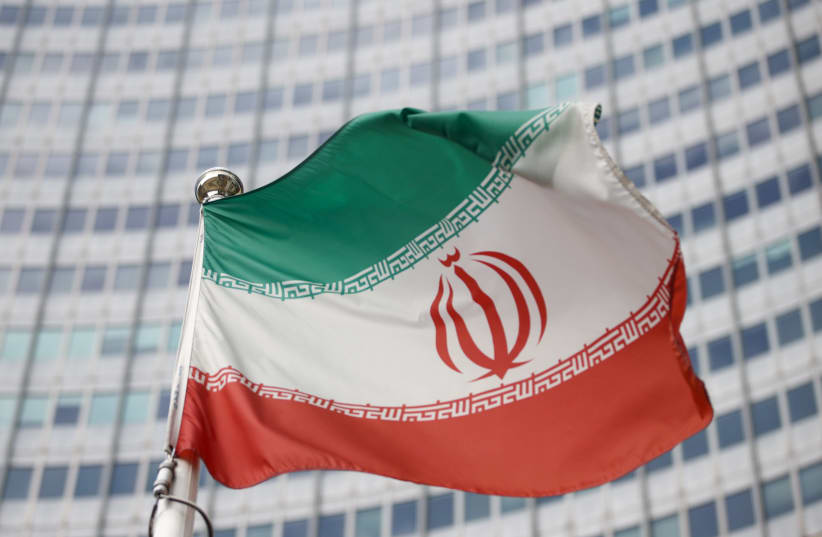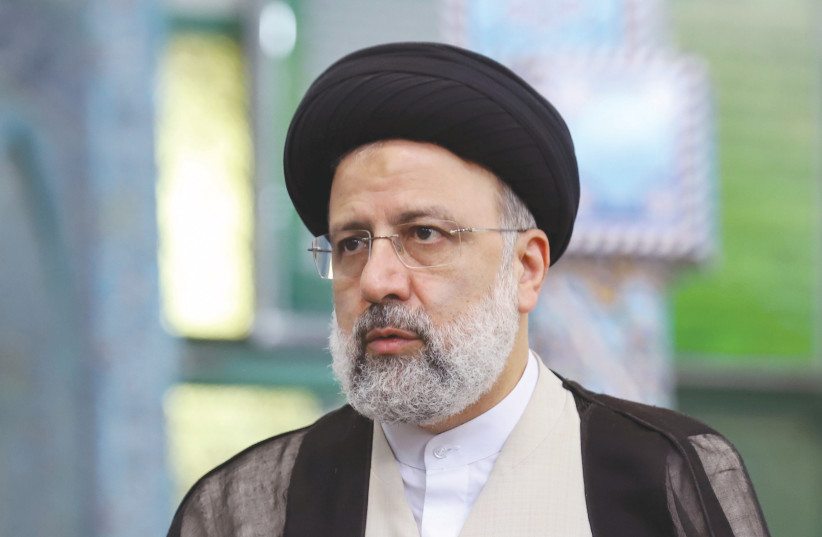In the ongoing nuclear standoff involving the US and Iran – with Israel and the moderate Sunni Arab states the most actively interested parties on the sidelines – everyone has now blinked.
Where that means the nuclear standoff will go next is less certain.
The US blinked first.
Israeli intelligence sources have explained that when Washington saw that Ebrahim Raisi would be elected president of Iran, it softened some of its red lines, hoping to wrap up a deal before he came on.
These softened positions included showing a willingness to let the Islamic Republic place its advanced centrifuges – which could allow it to produce material for a nuclear bomb at a faster rate – in storage as opposed to the original demand that almost all be destroyed.
Under the 2015 JCPOA Iran nuclear deal, Tehran was allowed to retain a very limited number of its advanced centrifuges, compared to the hundreds it has operating now.
The Biden administration has reportedly shown some additional flexibility regarding which sanctions it would remove as part of a return to the deal.
These pre-Raisi concessions are part of what may have encouraged the new Iranian leader to seek more concessions by stalling the negotiations for four months and barreling forward with 60% enrichment – only one step down from the 90% needed for weapons-grade uranium.
Last week, the Islamic Republic agreed to renew talks with the International Atomic Energy Agency over nuclear inspections and allowed the agency initial access to some of its nuclear observation equipment after months of locking out the agency’s inspectors.
Notably, some of the equipment was reported as damaged, and the IAEA gave its first details about the damage.
The agency did not reveal whether the damage to its cameras was caused by the June attack on Iran’s Karaj nuclear facility (attributed to Israel) and whether its conclusion was based on Iranian reports, or whether it had independently confirmed the cause of the damage.
This is an important question since it raises suspicions that the Iranians tampered with IAEA equipment over the last few months to hide certain activities. It is noteworthy, however, that Israeli officials have not denied involvement in the Karaj attack.
One could argue that Iran did not blink so much, since it finally started to cash in on the new conciliatory approach in Washington.
But blinking is still blinking, and the Islamic Republic has not yet received the major concession it has sought: a full lifting of sanctions by the US before a return to the JCPOA.
Under the deal, Iran would need to give up all of its uranium enriched to 60% and 20% and most of what has been enriched to 5% before sanctions are lifted.
Israel also seemed to blink in pre-Yom Kippur interviews.
Defense Minister Benny Gantz became the first senior Israeli official to publicly reduce opposition to an American return to the JCPOA.
Until now, Gantz, Prime Minister Naftali Bennett, former prime minister Benjamin Netanyahu and all other Israeli officials were publicly opposed to the deal.
If there was a difference between the Netanyahu and Bennett approaches, it was in style. Netanyahu wanted to make the fight with the US over Iran a constant source of friction in order to win political points with portions of the American and Israeli electorate, and possibly to intimidate Iran.
Bennett has tried to win back support for Israel in the US Democratic Party, which reached historically low levels under Netanyahu and after he publicly attacked then-president Barack Obama with a speech before the US Congress in 2015.
But Gantz’s statement crossed a new line.
It came only a day after Foreign Minister Yair Lapid played down Iran’s achievement of getting to a point of being only one month from sufficient uranium for a nuclear weapon.
Lapid said out loud what only Israeli critics, nuclear scientists and sometimes IDF officials were saying quietly when Israeli politicians rattled their sabers about how close Iran was to a nuclear weapon.
He explained that even if the Islamic Republic gets to the point where it has enough uranium, it would still be more than a few months away from being able to deliver a nuclear weapon.
In fact, even hawkish nuclear experts and (non-political) Israeli intelligence officials have said for some time that the fastest Iran could develop a nuclear weapon after it had sufficient weaponized uranium would be six months.
IDF Chief of Staff Lt.-Gen. Aviv Kohavi and multiple IDF intelligence officials have put the number at closer to two years.
The disparity primarily derives from how much Iran has accomplished clandestinely in the areas of detonation and ballistic-missile development since the 2003 era (an era which Israel knows a lot about after the Mossad seized Iran’s nuclear archives) and what activities Tehran might or might not be physically and financially capable of undertaking in parallel.
But by saying this out loud, Lapid reduced the urgency that Israel has placed on Iran’s pressing forward to a nuclear bomb.
Lapid could be trying to ease pressure on the US to rush back into a deal, using the argument that if Iran is not that close to building a bomb, then the US can wait for a “better” deal.
But taken along with Gantz’s statement, it seems that at least some members of the current Israeli government are ready to swallow a US return to the JCPOA provided they get guarantees of economic sanctions snapping back in the event of a violation and assurances from the US that it would not resist Israeli plans to attack Iranian nuclear facilities in the future if necessary.
Will all of this lead to an Iranian and American return to the JCPOA? What will the new JCPOA look like, and will the Biden administration stay true to its commitment to enforce an add-on to the deal to fix its holes? How will Israel act if Washington and the West simply wilt under Iranian pressure and suffice with a slightly weaker JCPOA in which Iran permanently gets to keep its hundreds of advanced centrifuges – even if they are temporarily closeted?
These are all open questions.
But the blinking from all sides over the last few days has started to reshape the geopolitics surrounding the issue – and it seems that more changes and surprises may not be far off.

